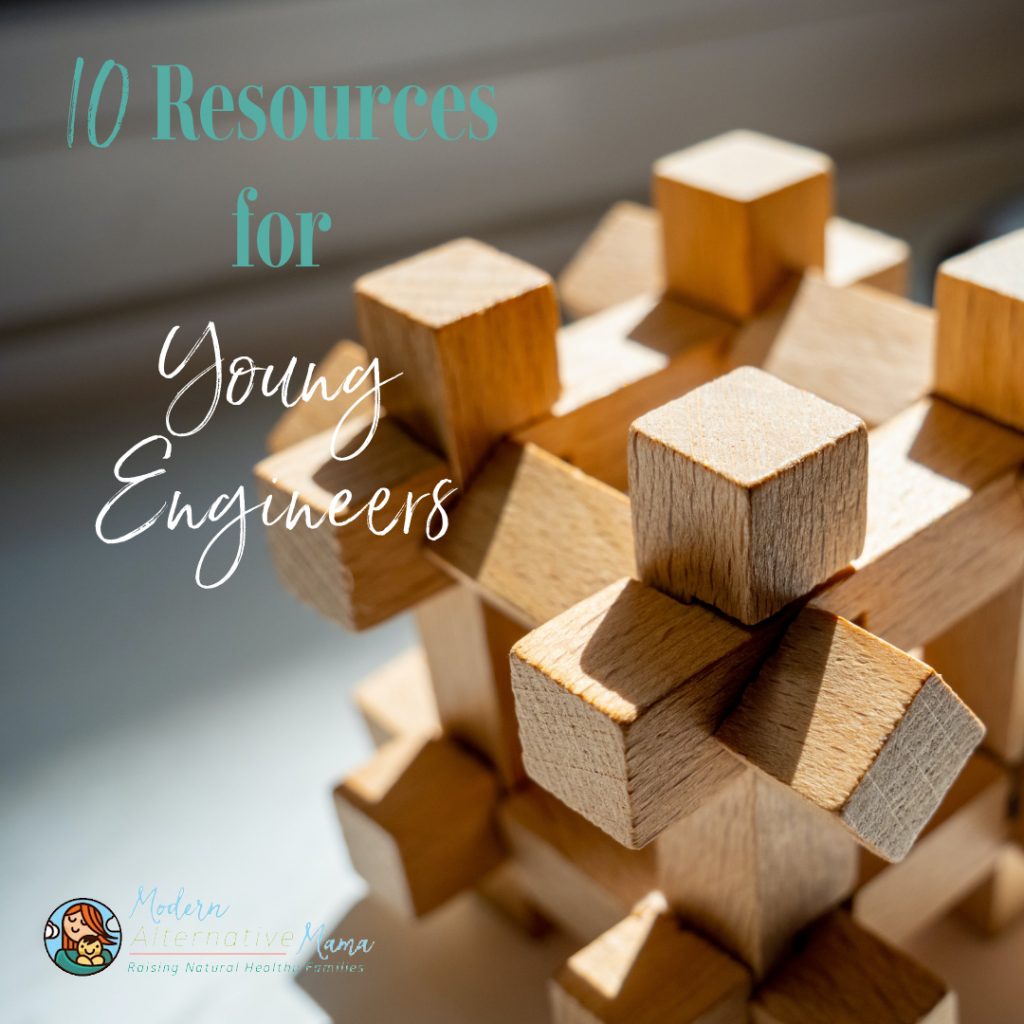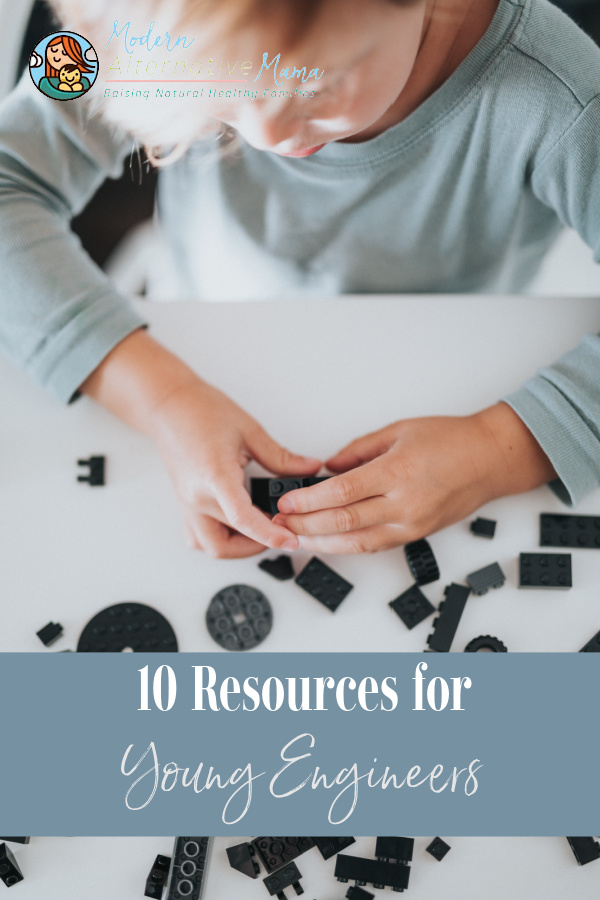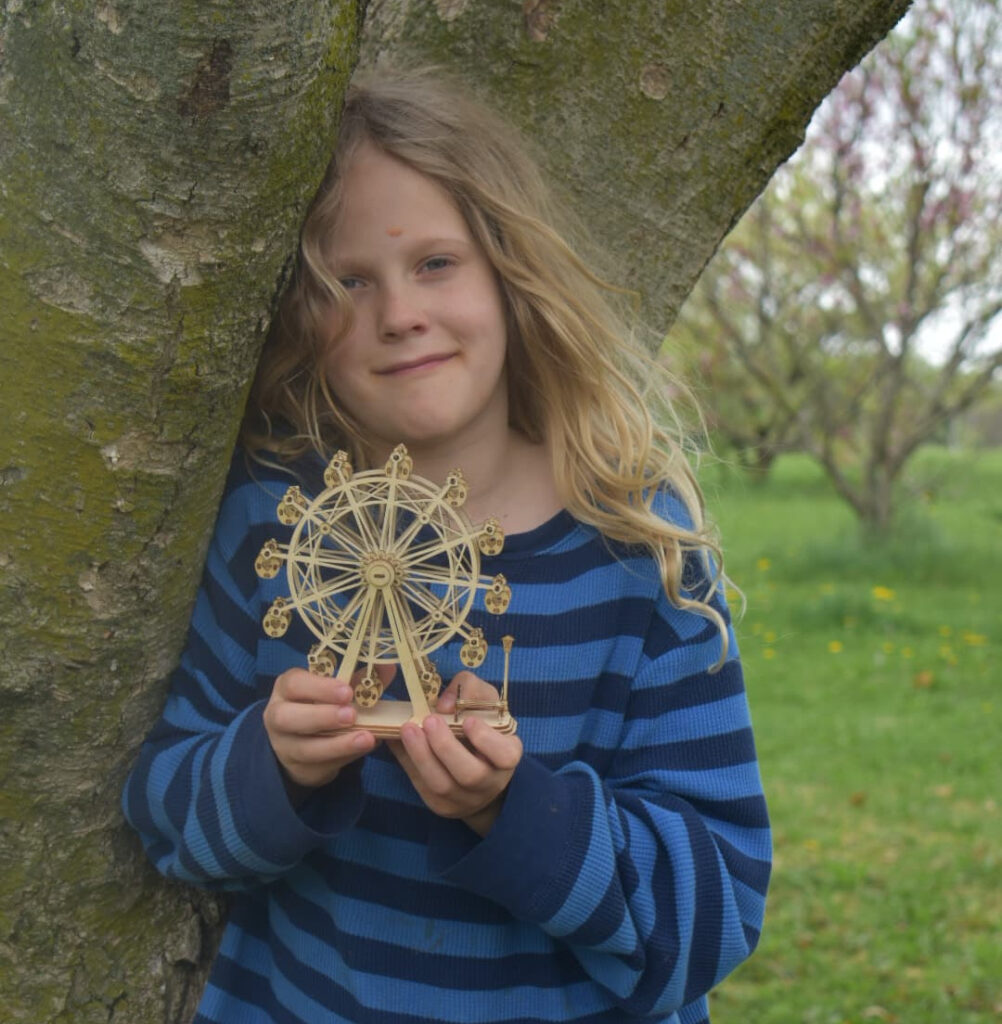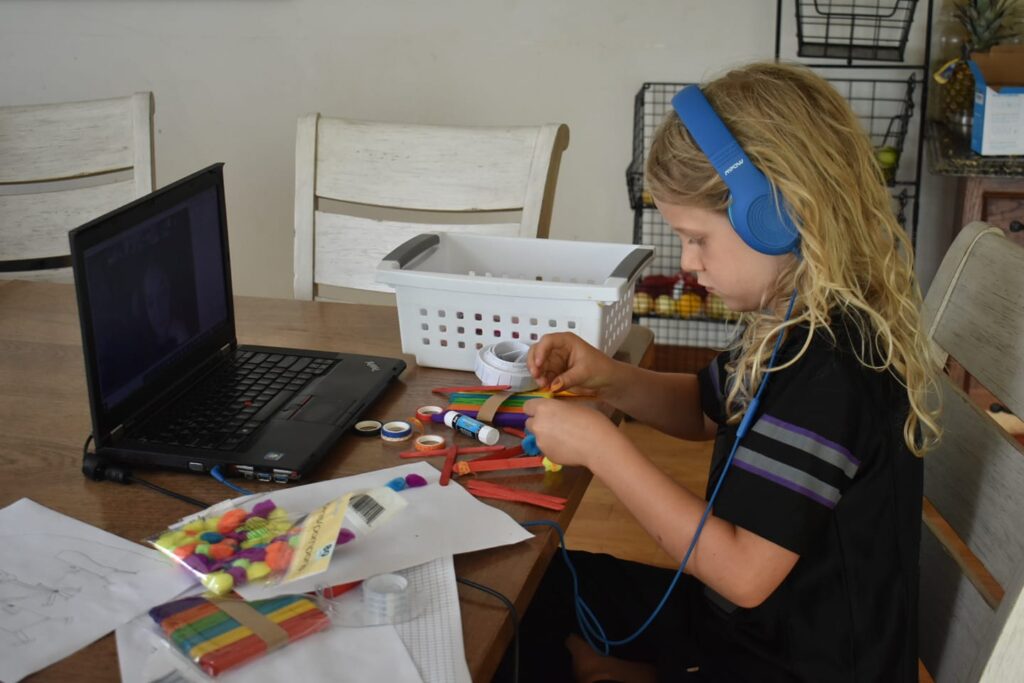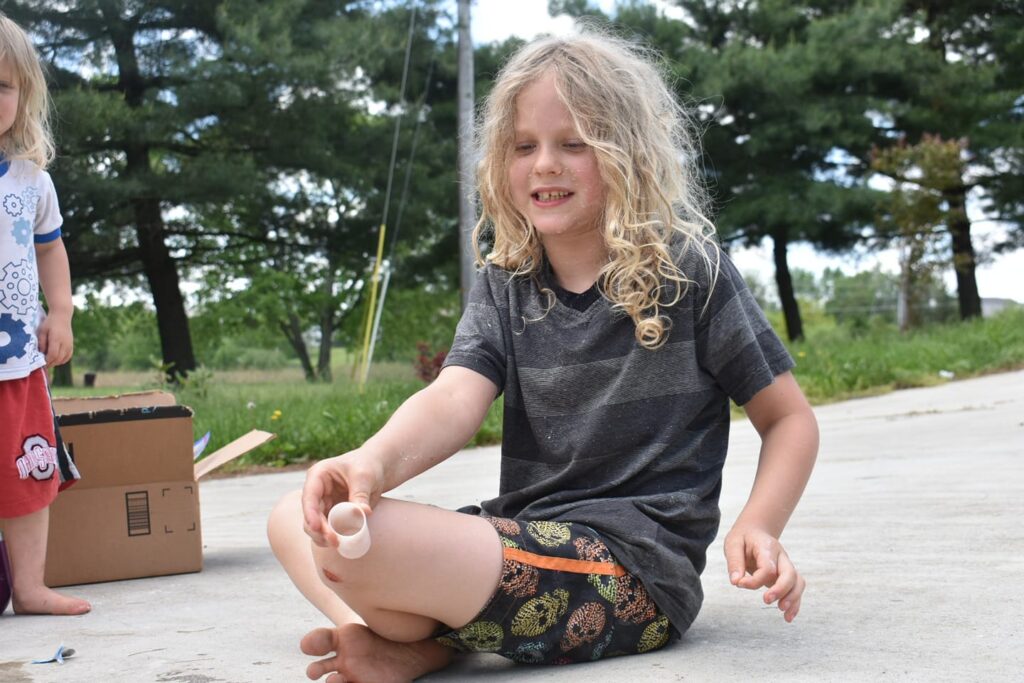Two of my kids love building things, and one has announced that he definitely wants to be an engineer when he grows up. He’s 9 (10 this summer) and has been saying this — and working towards it — for about a year.
The freedom of homeschooling means that we can tailor his education towards his passion, and give him a lot of projects that are all about engineering! We’ve gathered a lot of our favorite resources here, which are great for any kids who love to build, take apart, and generally tinker. Some are hands-on, and some are educational (like our cool, free math resource we’re loving).
Many of these cost money, but are in the $5 – $30 range — not crazy expensive. We have slowly built up our supplies over time. Any time we have a birthday we ask for supplies or use birthday money to buy some new kits. And every month or so we add a new kit or project. It does add up!
Even if your child does not know what s/he wants to do as an adult, or you’re just looking for general STEM/STEAM experiences, these are great ideas.
Resources for Young Engineers
Tinker Crates
We just started trying these a month ago, but it’s been a fast favorite. It’s a subscription box that teaches various engineering concepts and includes a new project to build each month. Our first one was a “spin art” machine, and they actually had to cut wires and build a circuit to create it. Then, they could make fun art projects. It’s a great STEAM activity! (You can get 50% off your first one when you click HERE.)
Eureka Crates
This is by the same company, and we’re trying our first one soon. It’s the “next level” of engineering, intended for teens. If you have an older child, or one who has a lot of building experience and is ready for more complicated projects, this is a great one to try. We’re looking forward to building a lock box! (You can get 50% off your first one when you click HERE.)
Wooden Puzzles
We buy 3D wooden puzzles, which come with pre-cut pieces. They have to follow instructions closely to put together quite a few small pieces and finish a design. There are a lot of options in the $10 – $15 range. These are great to physically build something, and make sure pieces fit together properly. (Here’s one example.)
Erector Sets
We’ve done a few of these too! There are general sets where you can design and build your own items, and sets that walk you through a specific project. They have off-brand sets for around $5 at Five Below, and we have done a couple of those. We have also done THIS SET and THIS KIT. There are some good project options in the $15 – $30 range.
Taking Apart Broken Things
When my sewing machine broke last fall, and I knew repairing the old machine would cost more than it was worth, I gave it to the boys to take apart. They opened that thing up, removed all the pieces, and tried to build new things from the parts.
If you don’t have broken things around, you can also go to the thrift store to pick up old items for a couple dollars, or ask friends or family if they have broken things around. We try to keep the parts in baskets so that they can use them later if they want to build more.
School Yourself
This is a website (see it HERE). It’s FREE to use, and it teaches higher-level math, but in a really hands-on, easy-to-understand way. My 9-year-old is doing algebra right now, but it starts with a number line, explains positive and negative numbers, addition and subtraction, etc. Basically all of elementary math but using algebra terms.
It’s very visual and interactive, and kids who are interested in higher math but not quite “there yet” can gain skills very rapidly with this. It’s not colorful and cutesy because it’s meant for older students, but it has worked really well for us because we don’t care about that kind of thing.
Outschool Classes
We have taken several classes on engineering topics on this platform. There are two in particular, Junior Engineering and Intermediate Engineering (both are 12-week series with the same teacher) that have been very hands-on and fun.
We have also do Electromagnetics, physics, STEM challenges, chemistry, algebra, and a lot of classes that have nothing to do with engineering (various history and creative writing topics). You can get $20 off your first class HERE.
Art Supplies
We have a whole homeschool “area” of various supplies that kids can use to build and create things. These include:
- Wooden craft sticks
- Glue sticks
- Liquid glue
- Rubber bands
- White paper
- Construction paper
- Scissors
- Pencils
- Colored pencils
- Clay
- Rulers
- Compass
- Recycled materials (toilet paper tubes; egg cartons; cardboard boxes; etc.)
Science Boxes
We also have “science boxes” of materials that I collect over time, some of which only come out with adult supervision (like Xacto knives). We have magnets, beakers, a microscope, and more. I get most of these items in bulk on Amazon, or in stores during back-to-school sales. The Dollar Store has a lot of these items too!
These boxes are project-based, and some can be used for little experiments. I’ve kept boxes of Alka-Seltzer to make “chalk rockets” (see the pic above; the chalk rocket exploded a little early and got him!), bottles of vinegar and isopropyl alcohol, syringes (they can be used to make hydraulic machines), and more. If they’re grouped into projects, I can just pull one out and do an activity with the kids easily.
I also have picked up science kits at Home Science Tools (some are relatively inexpensive, in the $5 – $10 range), and at Teacher Source.
LEGOs
I mean, of course, right? 🙂 We’ve always had LEGOs around for the boys to build with. And now that we don’t have any little ones (my youngest is 3!), the LEGOs are pretty much…everywhere. Every one of the boys builds with them at some point, and they create pretty fun structures. Then they can take them apart and build again. They’re great to buy by the pound on eBay, if you’re looking for a deal.
We love hands-on learning, and these projects have allowed us to support our future engineer’s dreams in a very real-world way. It’s been really fun to watch him grow in his knowledge and ideas! I hope this helps your little STEM learners too!

